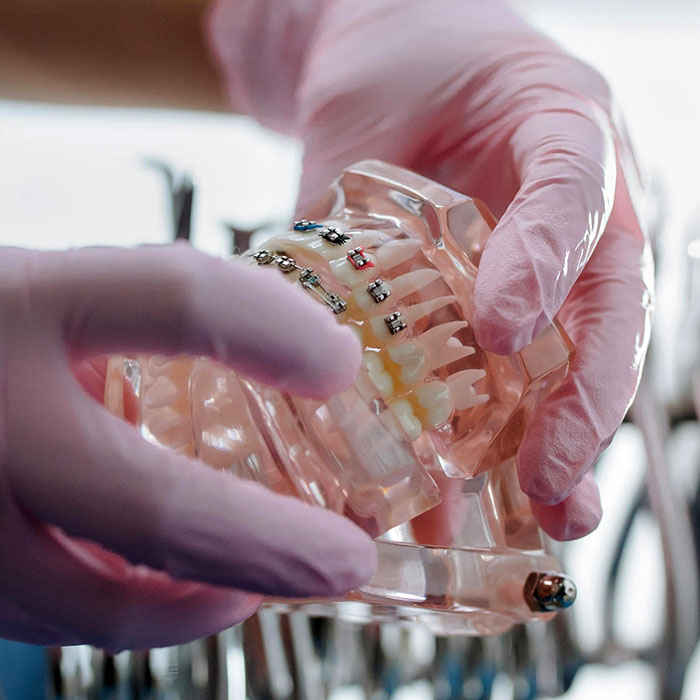
THE INITIAL CONSULTATION is when the orthodontist assesses the position of the patient’s teeth and begins planning the treatment to move them into proper alignment. The orthodontist also addresses a lot of the typical patient questions, but we can take a peek at those now.
How long will the treatment take?
That depends on the specific patient. Someone with some minor dental crowding will be done much more quickly than someone with a severe malocclusion and an impacted tooth, for example.
How do I brush and floss around braces?
Carefully! There are a lot of extra nooks and crannies where food particles and plaque can hide. Tools like a water flosser and floss threaders make it easier.
What’s on the banned foods list?
Lots of sticky and crunchy foods are on the banned list for braces-wearers because it’s very easy to break a bracket loose while eating them, and that can slow treatment down.
What happens if something goes wrong with my braces?
If a bracket breaks or an archwire snaps, orthodontic wax can help until the patient is able to come in for a repair appointment.
Which treatment option is best for me?
Traditional braces might be the best (or only) option for some patients while clear aligners or something else could work for others. The orthodontist will determine the most effective option.
How can I finish my treatment on schedule?
The most important thing any patient can do to reach Braces-Off Day on time is to follow all of the orthodontist’s instructions exactly.
Top image used under CC0 Public Domain license. Image cropped and modified from original.
Disclaimer: the content on this blog is not intended to be a substitute for professional medical advice, diagnosis, or treatment. Always seek the advice of qualified health providers with questions you may have regarding medical conditions.


 Website Powered by Sesame 24-7™
Website Powered by Sesame 24-7™
